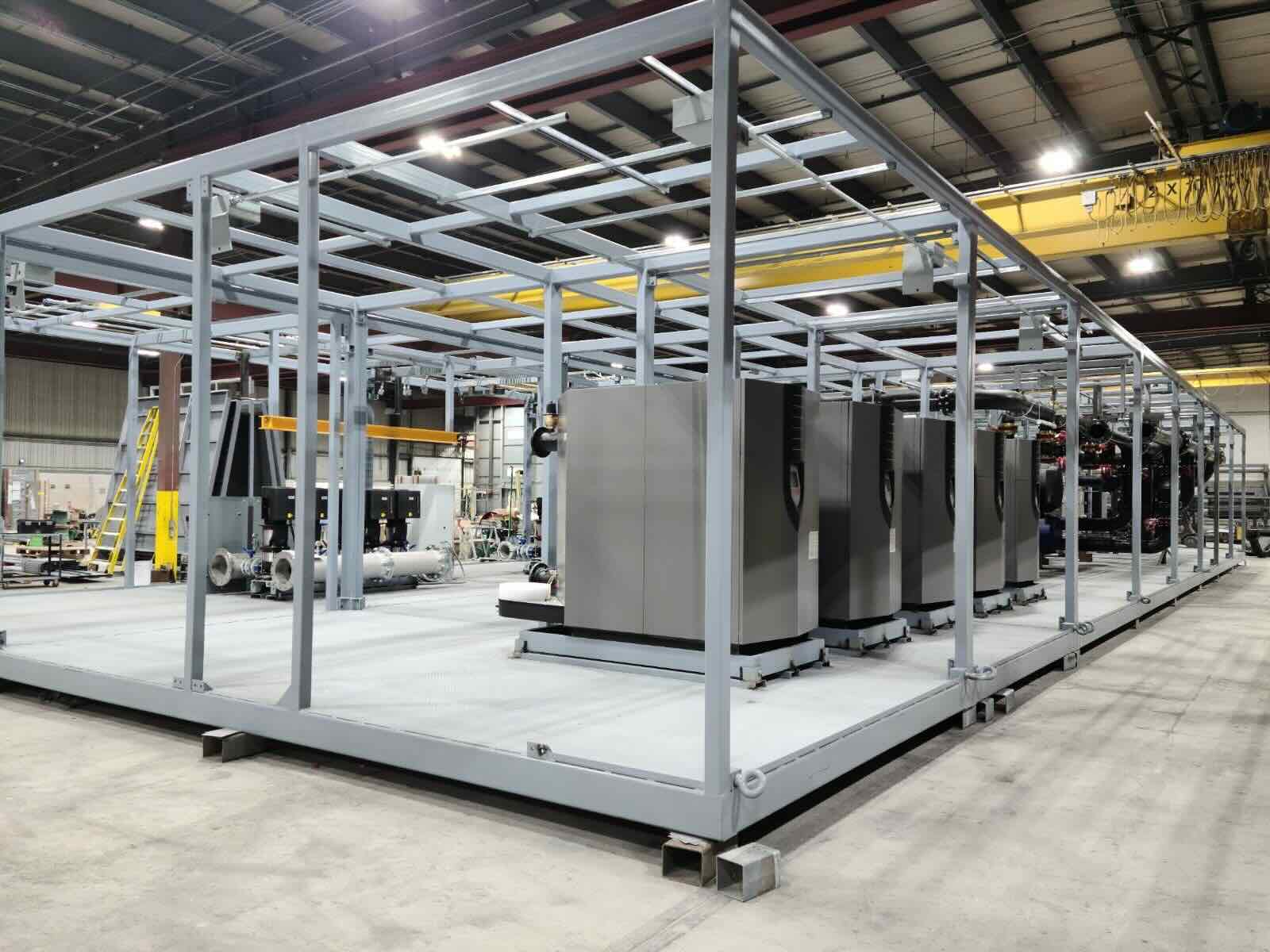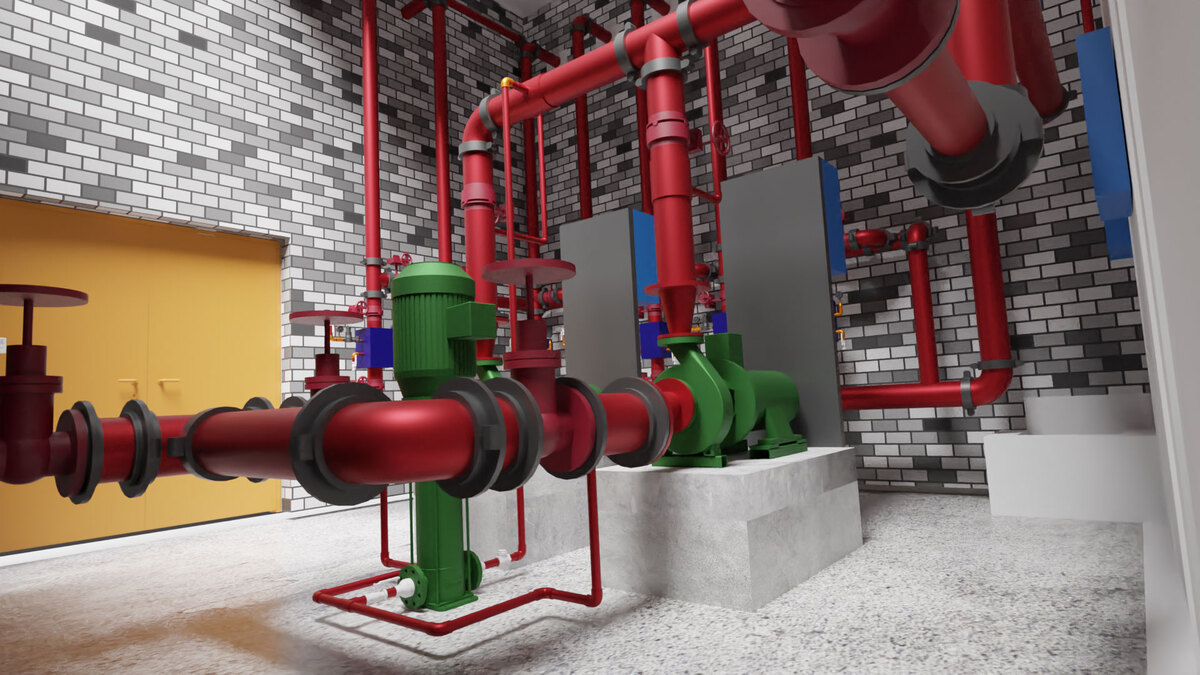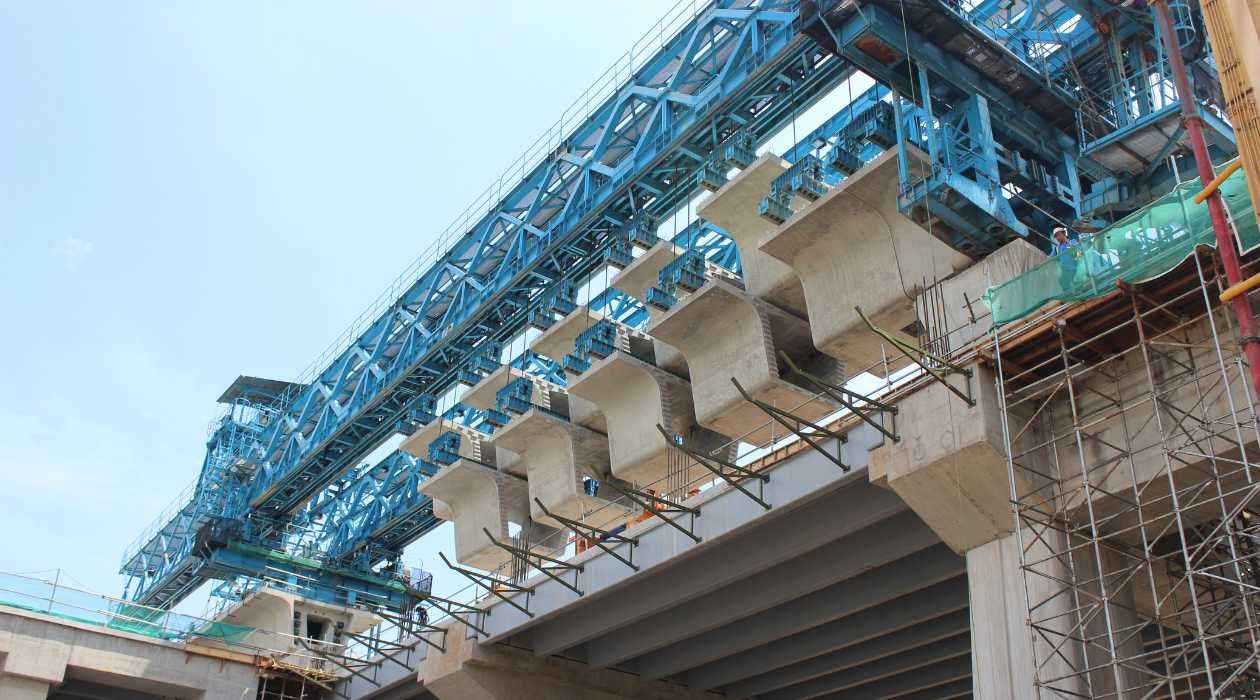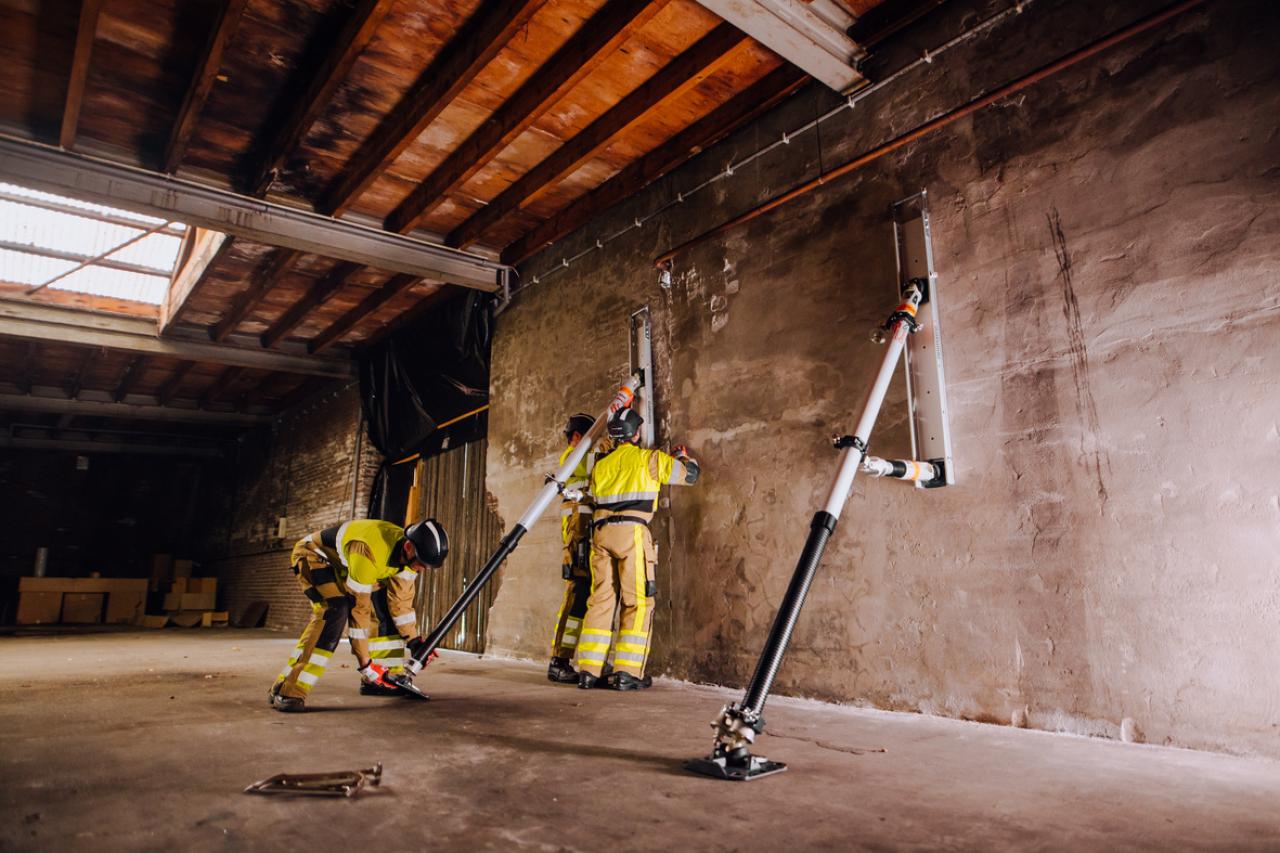Home>diy>Building & Construction>What Is CSI In Construction


Building & Construction
What Is CSI In Construction
Modified: March 6, 2024
Discover the meaning of CSI in construction and how it relates to building-construction. Learn about the role of CSI in project specifications and coordination.
(Many of the links in this article redirect to a specific reviewed product. Your purchase of these products through affiliate links helps to generate commission for Storables.com, at no extra cost. Learn more)
Introduction
When it comes to the construction industry, attention to detail and organization are key to ensuring successful project execution. The Construction Specifications Institute (CSI) plays a vital role in this process, providing a comprehensive framework and guidelines for construction professionals to follow. Whether it’s planning, designing, or executing a construction project, CSI’s principles and codes are implemented to ensure compliance, quality, and efficiency.
In this article, we will explore what CSI is in the context of construction, its role in construction projects, the divisions and codes it encompasses, as well as its impact on construction planning and execution. We will also delve into the benefits of utilizing CSI in construction projects, as well as the challenges and limitations that professionals may encounter along the way.
Understanding CSI and its significance in the construction industry is crucial for all stakeholders involved in a building project, including architects, engineers, contractors, and suppliers. By adhering to CSI’s standards and practices, construction professionals can streamline processes, enhance collaboration, mitigate risks, and deliver high-quality results.
Key Takeaways:
- CSI in construction is like a detailed instruction manual for building projects. It helps everyone involved communicate clearly, work together efficiently, and make sure the project meets high standards.
- While CSI brings many benefits to construction, it also comes with challenges like complexity and the need for continuous updates. Overcoming these challenges requires proper training and effective communication among project stakeholders.
Read more: What Is A CSI Code In Construction
Definition of CSI in Construction
The Construction Specifications Institute (CSI) is a national association that is dedicated to improving communication, coordination, and documentation within the construction industry. CSI provides a standardized system for organizing and categorizing construction information, ensuring clarity and consistency throughout all stages of a construction project.
At its core, CSI focuses on creating and maintaining a set of industry standards known as the MasterFormat. This format provides a uniform structure for organizing construction information, including specifications, drawings, and other project documents. It allows professionals to efficiently locate, interpret, and communicate project requirements and specifications.
CSI’s primary objective is to enhance the efficiency and effectiveness of construction projects by promoting better communication, coordination, and collaboration among all stakeholders. By providing a common language and framework, CSI helps to eliminate misunderstandings, minimize errors, and facilitate smoother project execution.
In addition to the MasterFormat, CSI also oversees other important divisions and codes that are essential to the construction industry. These include the Uniformat, which focuses on the elemental breakdown of construction projects, and the Construction Specifications Practice Guide, which provides guidance on writing clear and concise construction specifications.
In summary, CSI in construction refers to the Construction Specifications Institute and its commitment to standardizing and improving communication and coordination within the industry. By providing a systematic approach to organizing and categorizing construction information, CSI aims to enhance project efficiency, reduce risks, and ultimately deliver successful construction outcomes.
CSI’s Role in Construction Projects
CSI plays a critical role in construction projects by ensuring proper communication, coordination, and documentation throughout all stages of the project. Here are some key areas where CSI’s role is crucial:
- Standardization: CSI establishes standards and guidelines for organizing and categorizing construction information, enabling consistent communication and understanding across the industry. This standardization promotes efficiency, reduces errors, and enhances collaboration among various stakeholders.
- Clarity and Consistency: CSI’s codes and divisions provide a framework for creating and interpreting project documents such as contract specifications, drawings, schedules, and budgets. This helps to ensure that all parties have a clear and consistent understanding of project requirements, reducing the chances of misunderstandings and conflicts.
- Efficient Communication: CSI’s guidelines and templates facilitate effective communication among project teams, including architects, engineers, contractors, and suppliers. By using common terminology and formats, professionals can exchange information more efficiently, improving project coordination and decision-making.
- Quality Assurance: CSI’s standards and practices help maintain high-quality construction outcomes. By providing detailed specifications and performance criteria, CSI ensures that materials, methods, and workmanship meet industry standards, resulting in durable and safe structures.
- Conflict Resolution: CSI’s comprehensive documentation and standardized procedures serve as valuable references in the event of disputes or claims. Clear and well-documented project records can help resolve conflicts or support legal proceedings, saving time and costs for all parties involved.
Overall, CSI’s role in construction projects is to foster better communication, coordination, and documentation, ensuring that projects are executed with precision, efficiency, and quality. By adhering to CSI’s guidelines and standards, construction professionals can mitigate risks, enhance collaboration, and ultimately deliver successful outcomes. The utilization of CSI principles is essential for the smooth execution of construction projects, contributing to the overall growth and development of the industry.
CSI Divisions and Codes
The Construction Specifications Institute (CSI) has developed a system for organizing construction information called the MasterFormat. The MasterFormat is divided into various divisions and codes, each representing a specific aspect of a construction project. Let’s explore some of the key divisions and codes within CSI:
- Division 00: Procurement and Contracting Requirements: This division includes contract forms, agreements, and general requirements for the project, such as bidding procedures, insurance requirements, and project closeout details.
- Division 01: General Requirements: Division 01 covers administrative requirements, including project coordination, quality control, temporary facilities, and regulatory compliance.
- Division 02: Existing Conditions: This division pertains to the evaluation, investigation, and documentation of existing site conditions, such as demolition, site preparation, and utilities.
- Division 03: Concrete: Division 03 focuses on concrete-related work, including the placement, curing, and finishing of concrete, as well as concrete reinforcement and formwork.
- Division 04: Masonry: This division covers all aspects of masonry construction, including brickwork, blockwork, stonework, and mortar.
- Division 05: Metals: Division 05 encompasses metal-related work, including structural steel, metal framing, metal roof systems, and metal fabrications.
- Division 06: Wood, Plastics, and Composites: This division includes wood framing, wood decking, wood doors, as well as plastic and composite materials used in construction.
- Division 07: Thermal and Moisture Protection: Division 07 deals with building envelope systems, such as waterproofing, insulation, roofing, and exterior wall systems.
- Division 08: Openings: This division covers doors, windows, hatches, and other openings in the building envelope.
- Division 09: Finishes: Division 09 includes interior and exterior finishes, such as flooring, wall finishes, ceilings, and decorative elements.
- Division 10: Specialties: This division encompasses specialty items and equipment, including signage, toilet accessories, partitions, and other miscellaneous items.
These divisions are just a sample of the wide range of codes and categories included in CSI’s MasterFormat. Each division is further divided into more specific sections and subsections, providing a comprehensive framework for organizing and documenting all aspects of a construction project.
By utilizing CSI divisions and codes, construction professionals can efficiently navigate and manage project information, ensuring clear communication, better coordination, and successful project execution.
When working in construction, understanding CSI (Construction Specifications Institute) standards is important for ensuring that projects are completed to the required quality and standards. Familiarize yourself with CSI divisions and their codes to effectively communicate project requirements and specifications.
CSI’s Impact on Construction Planning and Execution
The Construction Specifications Institute (CSI) has a significant impact on construction planning and execution. By providing a standardized framework for organizing and categorizing construction information, CSI ensures clear communication, efficient coordination, and successful project outcomes. Here are some ways in which CSI influences construction planning and execution:
- Clear Project Requirements: CSI’s codes and divisions help establish clear and specific project requirements. This clarity ensures that all stakeholders understand their roles and responsibilities, minimizing confusion and potential errors during the planning and execution phases.
- Improved Collaboration: CSI’s standardization enhances collaboration among various project teams, including architects, engineers, contractors, and suppliers. By using a common language and format, professionals can exchange information more effectively, reducing the risk of miscommunication and improving overall project coordination.
- Streamlined Documentation: CSI’s guidelines for specifying materials, methods, and workmanship enable the creation of precise and comprehensive project documents. This documentation streamlines the procurement process, facilitates accurate cost estimation, and ensures that project requirements are met consistently throughout the execution phase.
- Enhanced Quality Control: CSI’s standards and practices promote quality control throughout the construction process. By providing detailed specifications and performance criteria, CSI helps ensure that materials, equipment, and workmanship meet established standards, leading to the delivery of high-quality projects.
- Effective Risk Management: CSI’s system for organizing and documenting construction information aids in risk identification and management. Clear project documentation allows for easier identification of potential risks and facilitates the implementation of mitigation strategies, ultimately minimizing the likelihood of costly delays and rework.
- Efficient Change Management: CSI’s standardized documentation and referencing system make it easier to track and manage changes during the course of a construction project. This allows for more effective change management and helps prevent scope creep, ensuring that change orders are properly documented and implemented.
- Compliance with Regulations: CSI’s codes and divisions ensure that construction projects adhere to relevant building codes, regulations, and industry standards. This helps construction professionals stay updated on the latest requirements and ensures that projects are compliant, safe, and legally sound.
In summary, CSI’s impact on construction planning and execution is significant. By providing a standardized framework, clear communication channels, and precise documentation, CSI improves collaboration, quality control, risk management, and compliance throughout the construction process. Construction professionals who utilize CSI’s principles and guidelines are better equipped to plan and execute successful projects, delivering high-quality results while minimizing risks and ensuring client satisfaction.
Read more: What Is Construction
Benefits of Utilizing CSI in Construction Projects
The utilization of the Construction Specifications Institute (CSI) framework in construction projects offers numerous benefits, improving communication, coordination, and overall project outcomes. Let’s explore some of the key advantages of utilizing CSI:
- Standardization: CSI’s standardized system for organizing construction information ensures consistency and clarity across all project documents. This standardization reduces ambiguity, misunderstandings, and potential errors, leading to improved project outcomes.
- Efficient Communication: CSI’s guidelines provide a common language and structure for construction professionals to communicate project requirements, specifications, and intentions. Effective communication facilitates better collaboration, minimizes delays, and reduces costly rework.
- Clarity and Accuracy: CSI’s codes and divisions enable precise and comprehensive project documentation, ensuring that all stakeholders have a clear understanding of the project requirements. Accurate documentation reduces conflicts, promotes better decision-making, and facilitates smoother project execution.
- Streamlined Project Management: CSI’s framework enhances project management by providing a structure that allows for easier organization, tracking, and retrieval of project information. This streamlining of project management processes saves time, minimizes errors, and promotes more efficient workflows.
- Better Cost Estimation: CSI’s standardized system helps in accurate cost estimation, as project requirements are clearly defined and documented. This allows for more precise budgeting, reducing the risk of cost overruns and improving project cost control.
- Enhanced Collaboration: CSI’s framework promotes collaboration among various project teams, facilitating better coordination, information sharing, and problem-solving. Improved collaboration leads to better decision-making, faster issue resolution, and a more cohesive construction project team.
- Compliance and Risk Mitigation: CSI’s adherence to industry standards and regulations ensures that projects are compliant and minimizes risks. By following CSI’s guidelines, construction professionals can identify potential risks, implement mitigation measures, and improve overall project safety and quality.
- Improved Client Satisfaction: Utilizing CSI principles helps to deliver high-quality projects that meet or exceed client expectations. Clear documentation, efficient communication, and adherence to standards contribute to customer satisfaction, leading to positive referrals and future business opportunities.
The benefits of utilizing CSI in construction projects are numerous and have a significant impact on project success. By embracing CSI’s framework, construction professionals can improve communication, streamline project management, enhance collaboration, and ultimately deliver high-quality projects that meet client expectations and industry standards.
Challenges and Limitations of CSI in Construction
While the utilization of the Construction Specifications Institute (CSI) framework brings several benefits to construction projects, it is essential to acknowledge the potential challenges and limitations that professionals may encounter. Understanding these challenges can help stakeholders better navigate and overcome them. Here are some common challenges and limitations of CSI in construction:
- Complexity: The CSI framework can be intricate and extensive, requiring a comprehensive understanding of its divisions, codes, and guidelines. This complexity may present a learning curve for construction professionals who are new to the system, leading to potential errors or misunderstandings.
- Continuous Updates: Construction specifications and industry standards evolve over time. Keeping up with the latest updates and revisions in CSI’s codes and divisions requires regular research and training to ensure compliance. Failure to stay updated may result in outdated specifications and potential non-compliance issues.
- Flexibility: The CSI framework may not always accommodate unique project requirements or unconventional construction methods. Construction professionals may find it challenging to adapt the standardized system to fit specific needs or non-traditional building techniques.
- Cost and Time Investment: Implementing CSI within a construction project requires an investment of time and resources. It involves training personnel, updating software systems, and aligning existing documentation with CSI’s format. These investments may add initial costs and delay the project’s start or progress.
- Interpretation Variations: Despite the standardized system, some degree of interpretational variations may exist among project stakeholders. Differences in interpreting specifications, divisions, or codes can lead to conflicts or misunderstandings, requiring effective communication and clarification to resolve.
- Reliance on Documentation: The CSI framework heavily relies on accurate and comprehensive documentation. Incomplete or inaccurate documentation can compromise the effectiveness of CSI’s application, potentially leading to miscommunication, delays, or errors in project execution.
- Limited Applicability: CSI’s framework primarily addresses the technical aspects of construction, such as specifications, materials, and methods. It may not extensively cover other critical project management areas, such as scheduling, budgeting, or stakeholder engagement, requiring additional project management methodologies.
While there are challenges and limitations associated with utilizing CSI in construction projects, these can be mitigated through proper implementation, training, and effective communication among project stakeholders. Recognizing these limitations and proactively addressing them allows construction professionals to maximize the benefits of CSI while adapting it to suit the unique aspects of each project.
Conclusion
The Construction Specifications Institute (CSI) plays a vital role in the construction industry, providing a standardized framework and guidelines for organizing and communicating construction information. By utilizing CSI’s principles and codes, construction professionals can enhance communication, coordination, and overall project outcomes.
CSI’s impact on construction planning and execution is significant. It ensures clear project requirements, improves collaboration, streamlines documentation, enhances quality control, facilitates effective risk management, and promotes compliance with regulations. The utilization of CSI’s framework leads to better project management, accurate cost estimation, and increased client satisfaction.
However, challenges and limitations may arise when implementing CSI. These include the complexity of the framework, the need for continuous updates, the flexibility to address unique project requirements, the initial investment of time and resources, interpretations variations, reliance on documentation, and limited applicability.
Despite these challenges, construction professionals can overcome them by investing in proper training and implementation strategies, staying updated with industry standards, fostering effective communication, and adapting the CSI framework to suit project-specific needs.
In conclusion, CSI is a valuable resource in the construction industry, providing a structured approach to organizing construction information, improving collaboration, and enhancing project outcomes. By embracing CSI’s principles and codes, construction professionals can streamline processes, mitigate risks, and deliver successful projects that meet client expectations and industry standards.
Frequently Asked Questions about What Is CSI In Construction
Was this page helpful?
At Storables.com, we guarantee accurate and reliable information. Our content, validated by Expert Board Contributors, is crafted following stringent Editorial Policies. We're committed to providing you with well-researched, expert-backed insights for all your informational needs.















0 thoughts on “What Is CSI In Construction”